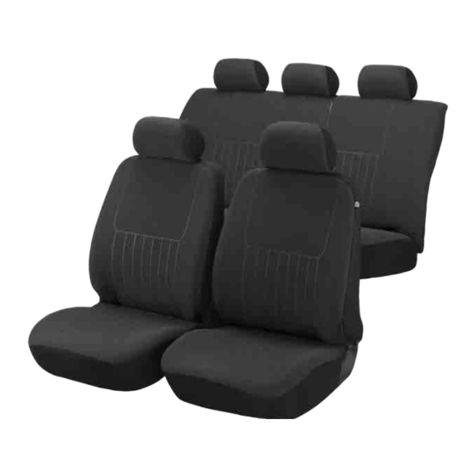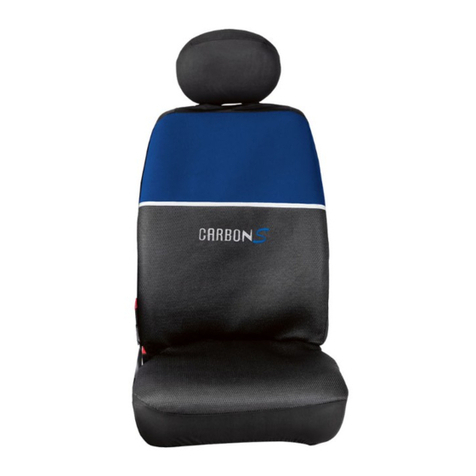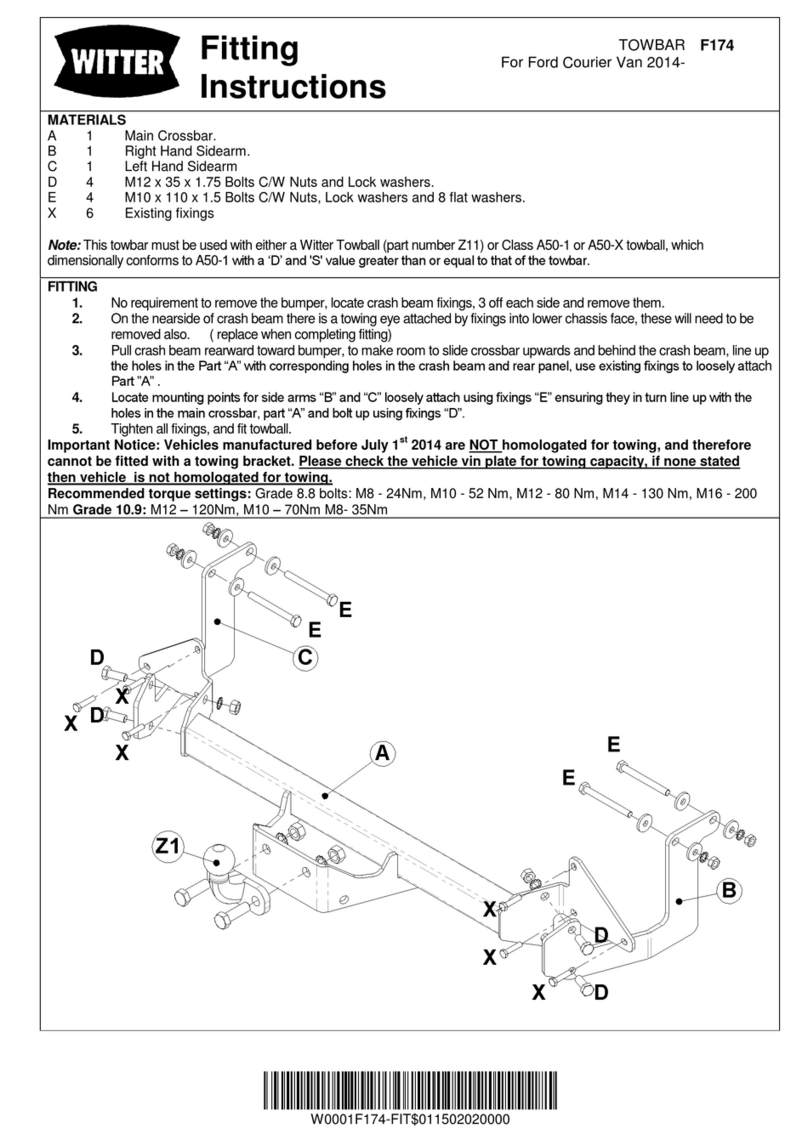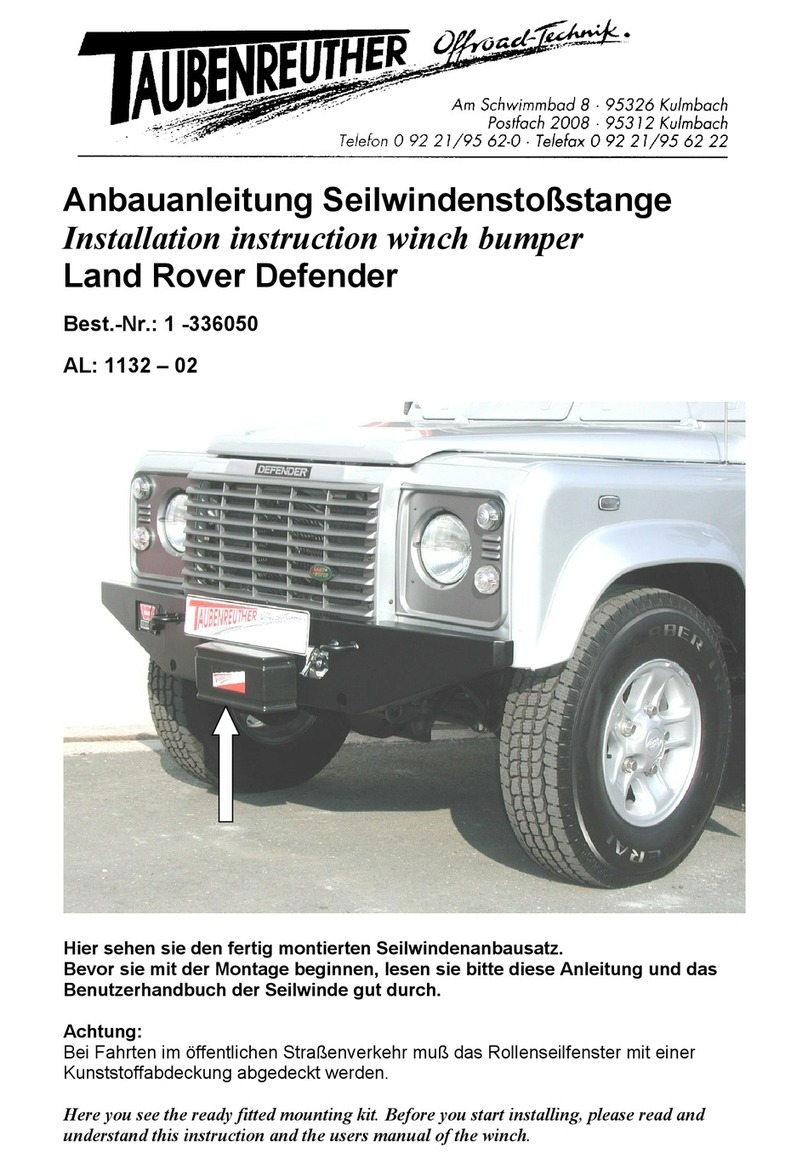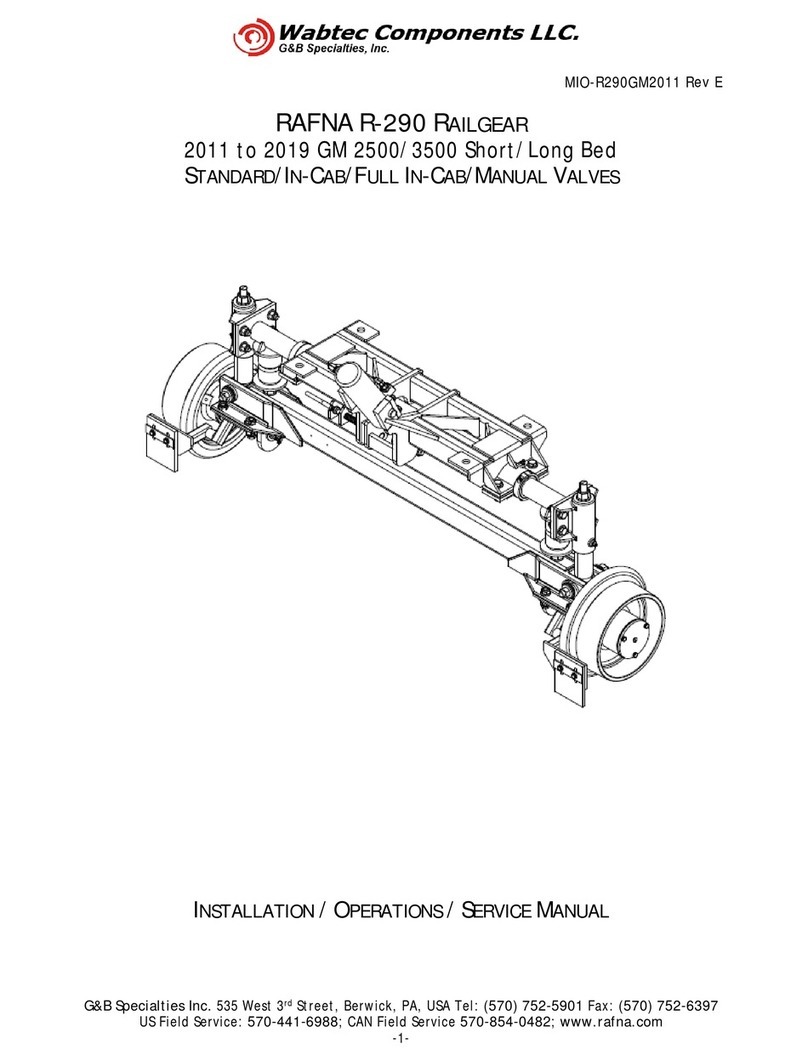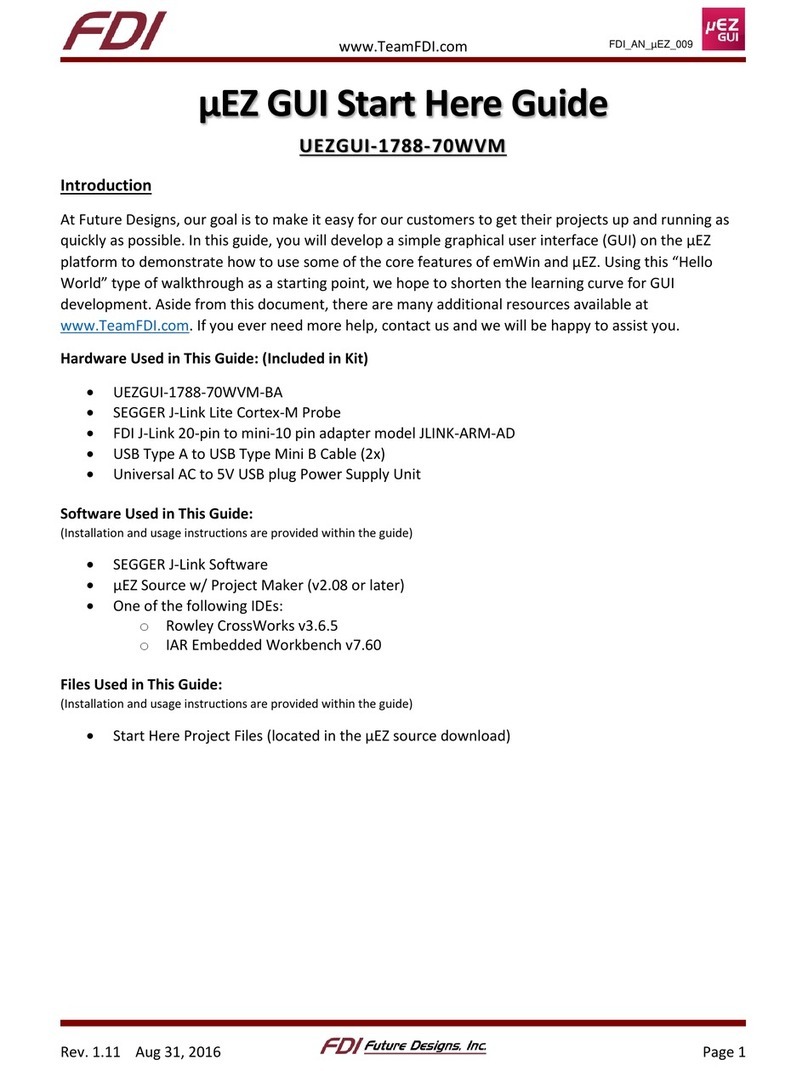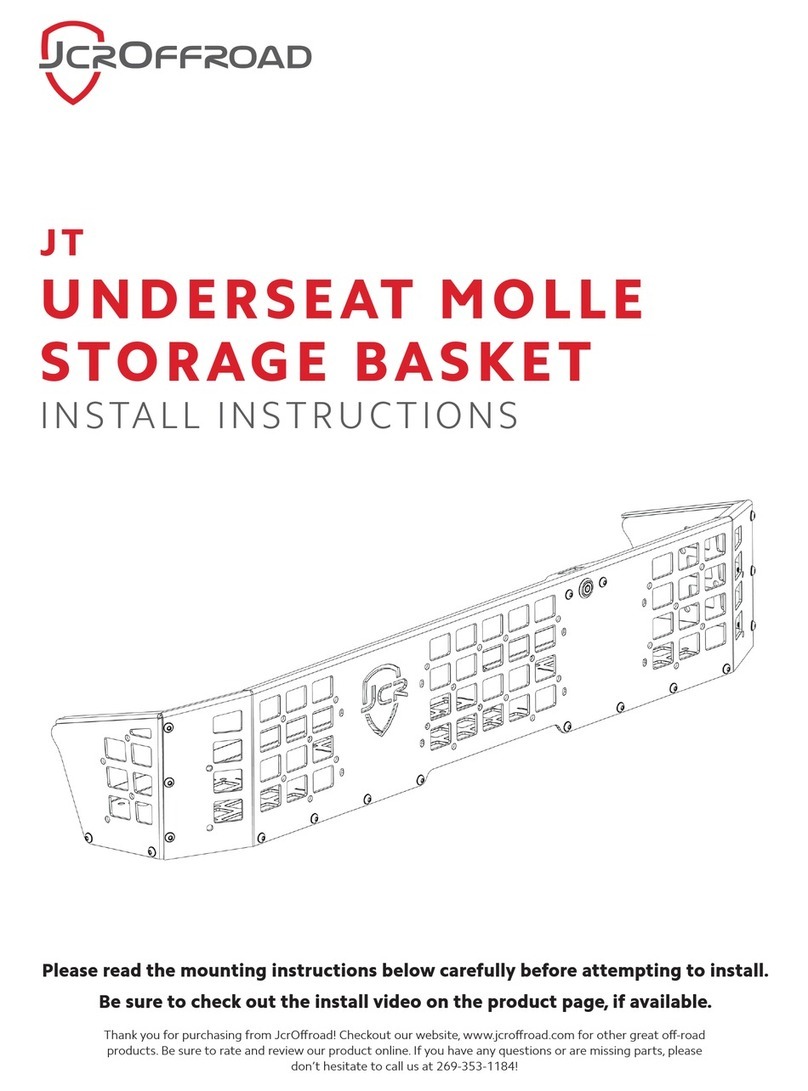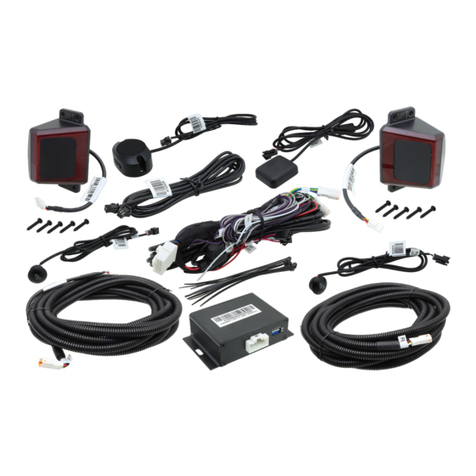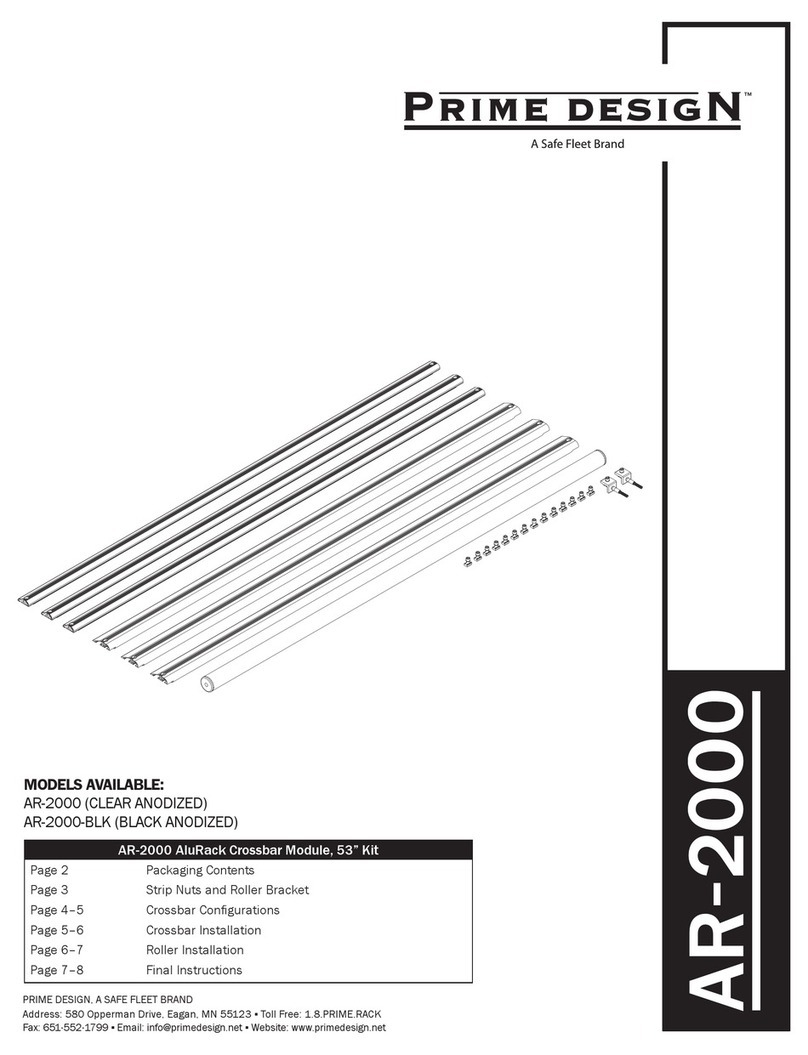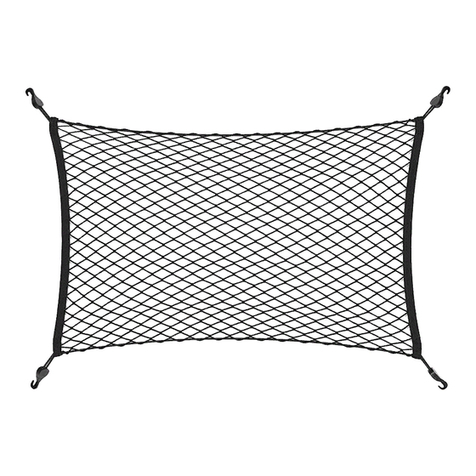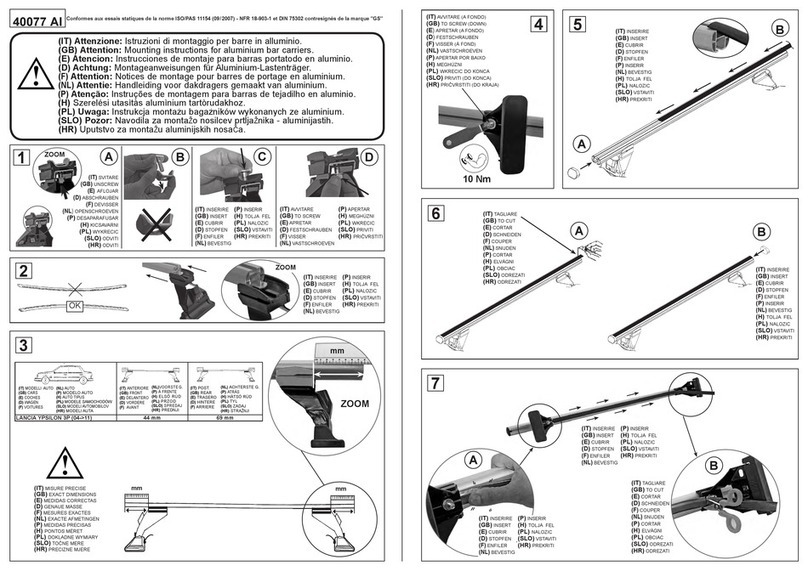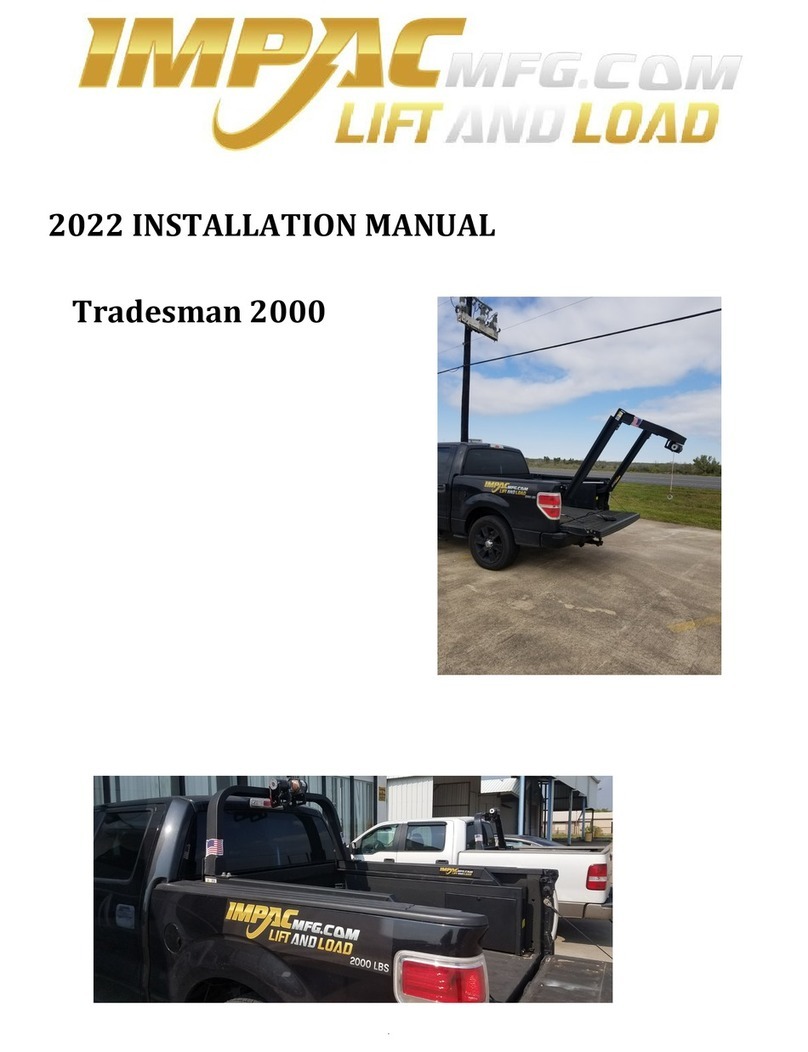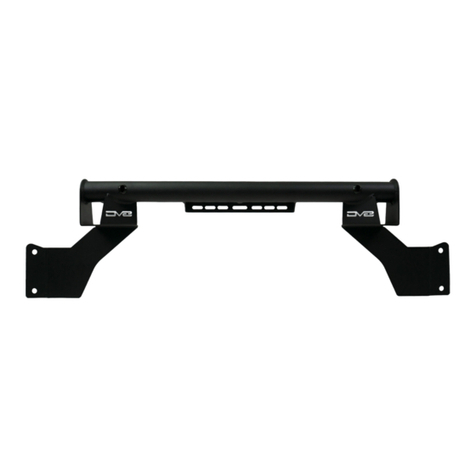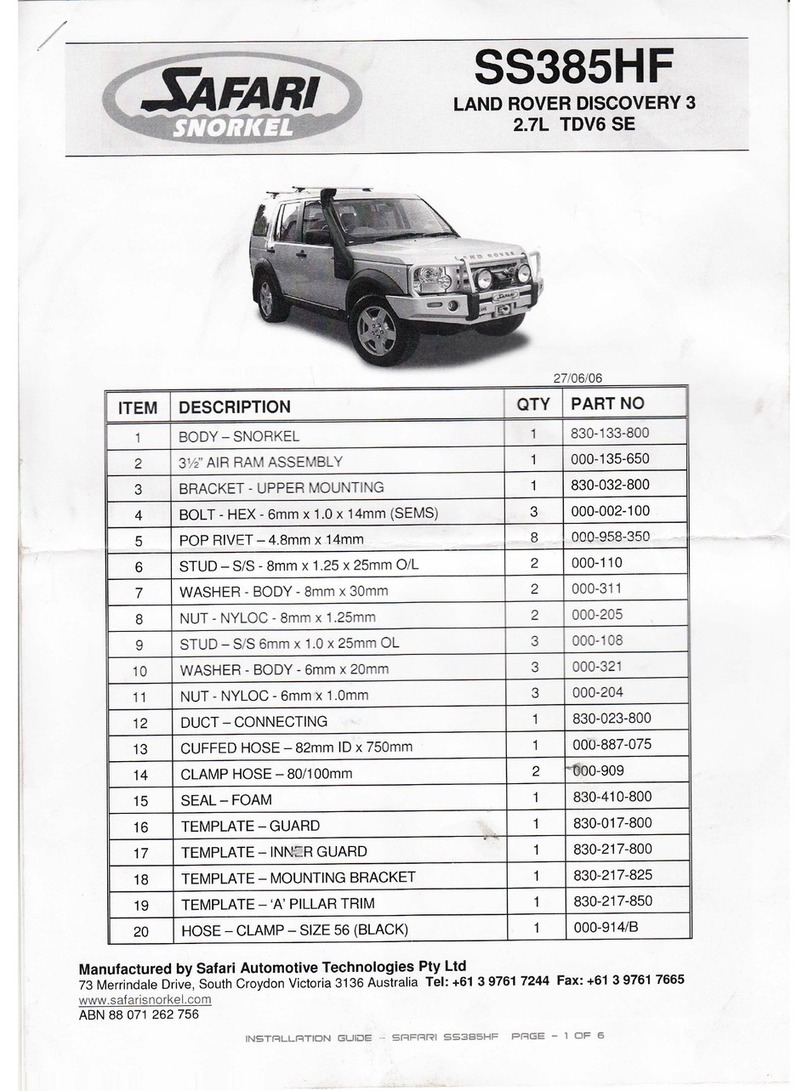
MIO-R45XRFR4836 Rev E
G&B Specialties Inc. 535 West 3rd Street, Berwick, PA, USA Tel: (570) 752-5901 Fax: (570) 752-6397
US Field Service: 570-441-6988; CAN Field Service 570-854-0482; www.rafna.com
-3-
INSTALLATION OF REAR RAILGEAR
Note
The axle lock-up assemblies for these units has been pre-installed at the factory prior to
shipping, it will be necessary to install the push/pull cable or Lever Lock-up Kit during
vehicle installation. The procedure for installing the cable and lever can be located in the
installation section of this manual.
Note:
The following procedure details the installation of the rotating rear railgear kit. The
hardware required for each installation is listed in the tables above.
The type of rear lock-up installed on this unit has no effect on installation. The installation
procedure below is typical for all R-450 Rotating Rear Units.
1. To install the railgear at the correct height, ensure that the road wheels and tires have
been installed on the vehicle and that the vehicle is resting on its properly inflated tires.
2. Position and support the railgear so that the railgear mounting boxes are on either side of
the rear of the vehicle frame with the blind end of the hydraulic cylinders facing the rear
of the vehicle. The mounting boxes should be flush with the rear of the vehicle frame and
fit around the vehicle’s suspension hangers. The holes in the mounting boxes should align
with existing holes in the vehicle frame. It may be necessary to loosen or remove the 1/2”
fasteners that support the railgear lock system to be able to fit the railgear on the frame.
Once the railgear is on the frame, tighten and torque the 1/2” fasteners securing the
railgear lock system to the railgear to 100 ft-lbs dry. Do not over torque.
3. Ensure that there is approximately 21.5” between the railgear-to-mounting box interface
and the ground as shown. If this height cannot be achieved, the vehicle suspension will
need to be modified. This modification is not included with the RAFNA railgear.
4. Fasten each railgear mounting box to the vehicle frame using three 5/8” x 2” long bolts,
six 5/8” washers and three 5/8” nuts through the existing frame holes at the rear as
shown.
5. Using the front-most hole in each railgear mounting box as a guide, drill a 25/32” hole
through the vehicle frame.
6. Fasten each railgear mounting box to the vehicle frame using two 3/4” x 2.25” long bolts,
four 3/4” washers and two 3/4” nuts through the drilled hole and the existing hole as
shown.
7. Torque the 5/8” fasteners to 150 ft-lbs dry and the 3/4” fasteners to 175 ft-lbs dry. Do
not over torque.
8. Place the rail wheels below the mounting tables on the railgear axle. Place the rail
sweeps to the rear of the rail wheels and on top of the mounting tables. Fasten the rail
wheels and rail sweeps to the mounting tables with eight 1/2” x 2.25” long bolts, sixteen
1/2” washers and eight 1/2” nuts.
